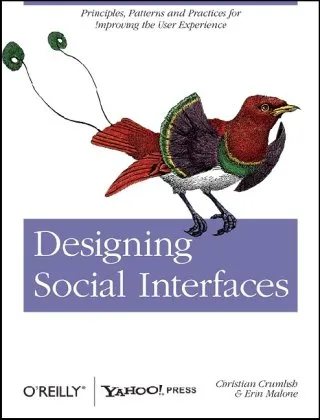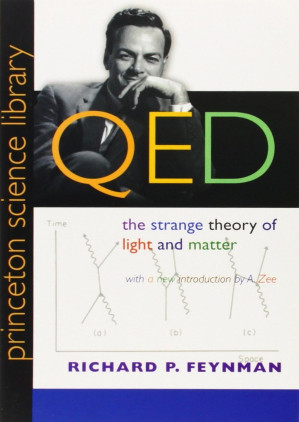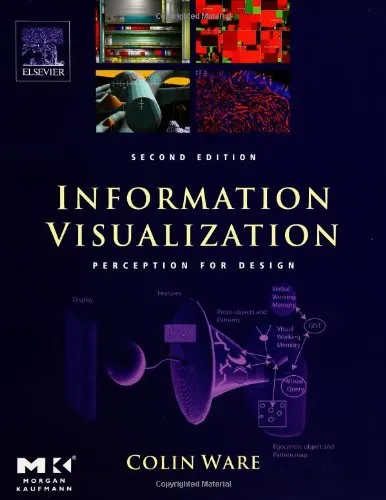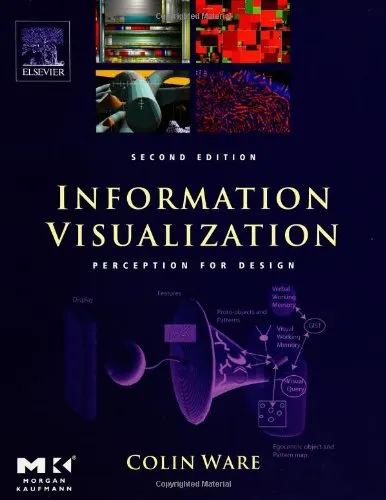From Brows to Trust: Evaluating Embodied Conversational Agents
4.0
بر اساس نظر کاربران

شما میتونید سوالاتتون در باره کتاب رو از هوش مصنوعیش بعد از ورود بپرسید
هر دانلود یا پرسش از هوش مصنوعی 2 امتیاز لازم دارد، برای بدست آوردن امتیاز رایگان، به صفحه ی راهنمای امتیازات سر بزنید و یک سری کار ارزشمند انجام بدینکتاب های مرتبط:
معرفی کتاب
کتاب "From Brows to Trust: Evaluating Embodied Conversational Agents" که به قلم زوفیا روتکای و کاترین پلاشو نوشته شده است، یکی از آثار پیشرو در زمینه مطالعه و ارزیابی Embodied Conversational Agents (ECAs) محسوب میشود. این کتاب به دقت به بررسی جنبههای مختلف تعامل انسان و رایانه از طریق ایجنتهای محاورهای تجسمیافته (ECAs) پرداخته و روشهای طراحی، تأثیرگذاری، و ارزیابی این سیستمهای پیچیده را تحلیل میکند. ECAs به عنوان عاملهای هوشمند دیجیتالی که توانایی درک، ارتباط غیرکلامی و تجسم فراهم میکنند، دریچهای نوین برای پیشرفت تعاملات انسانی و فناوری هستند.
خلاصهای از کتاب
یکی از اصلیترین موضوعات مطرحشده در این کتاب، نحوه ایجاد اعتماد در تعاملات بین کاربران و Embodied Conversational Agents است. کتاب در چندین فصل ساختاریافته به بررسی عواملی چون ارتباط کلامی و غیرکلامی، تعاملات چهرهبهچهره، حرکات بدن، و واکنشهای احساسی ECAs میپردازد. با تأکید بر ایجاد اعتماد، نویسندگان روشی چندرشتهای اختیار کردهاند که دامنهای از روانشناسی، علوم کامپیوتر، و طراحی رابط کاربری (UI) را پوشش میدهد. بهطور خاص، کتاب به نمونهبرداری از تجربیات کاربران، آزمایشات شناختی، و نحوه فرمولهسازی ویژگیهای انسانی در ECAs پرداخته و به این موضوع تأکید میکند که چگونه عناصر ظریف چون حالتهای چهره، تن صدا، و زبان بدن میتوانند تأثیر عمدهای بر ارتباط بشری و ECAs داشته باشند.
نکات کلیدی کتاب
- ECAs میتوانند از طریق ایجاد ارتباط غیرکلامی حس اعتماد و تعامل طبیعیتری با کاربران شکل دهند.
- ارزیابی این عاملها باید از زوایای چندگانه، از جمله کارایی، دقت، و جنبههای اخلاقی، مورد بررسی قرار گیرد.
- ایجاد تعامل مؤثر بین انسان و هوش مصنوعی نیازمند طراحی دقیق سیگنالهای اجتماعی و شناختی است.
- استفاده از فناوریهای نوین مثل یادگیری ماشین و مدلهای بصری میتواند کارایی و جذابیت ECAs را افزایش دهد.
- نحوه بروز احساسات و حالات رفتاری در ECAs بر پایهی شبیهسازی رفتار انسانی میتواند مسیر جدیدی برای تحقیقات آتی باشد.
نقل قولهای مشهور از کتاب
“An Embodied Conversational Agent is more than a machine; it is a mediator of trust and understanding between humans and digital systems.”
“To build trust in ECAs, it's not only about what they say but how they say it — their gestures, tone, and expressions matter.”
“The future of Embodied Conversational Agents lies in their capacity to adapt, learn, and empathize like a genuine human interlocutor.”
چرا این کتاب اهمیت دارد؟
اهمیت این کتاب در چندین جنبه مختلف نهفته است. نخست، کتاب "From Brows to Trust" به عنوان منبعی جامع و کاربردی، برای هر کسی که در زمینه Human-Computer Interaction (HCI) یا هوش مصنوعی فعالیت دارد، ارزشمند است. این کتاب نه تنها جنبههای نظری ECAs را به خوبی توضیح میدهد، بلکه شامل روشهای عملی برای طراحی و ارزیابی این سیستمها نیز میشود. دوم، این کتاب به طور موثری پلی میان علوم اجتماعی و فناوریهای رایانهای برقرار میکند. برای طراحان نرمافزارها، محققین روانشناسی، و حتی علاقهمندان به ارتباطات انسانی، این اثر افقی گسترده در فهم تعاملات هوشمند ارائه میدهد.
در دنیای امروز که هوش مصنوعی نقشی بیبدیل در زندگی روزمره ما بازی میکند، ECAs میتوانند راه حلی برای بهبود راههای تعامل بشری و دیجیتالی ارائه دهند. این کتاب راهنمایی سودمند برای گامهای عملی و نظری در این مسیر به شمار میآید.
Introduction
In an era where technology is seamlessly integrated into our everyday lives, the interaction between humans and machines has rapidly progressed from basic commands to meaningful, engaging dialogues. "From Brows to Trust: Evaluating Embodied Conversational Agents" delves into this fascinating evolution, focusing on the design, evaluation, and impact of Embodied Conversational Agents (ECAs). This book brings together perspectives from diverse disciplines, offering a multidisciplinary lens on how ECAs build connections with users and foster trust. By addressing both theoretical aspects and practical implementations, the book serves as an invaluable resource for researchers, developers, and enthusiasts intrigued by the future of human-computer interaction.
Edited by Zsófia Ruttkay and Catherine Pelachaud, two renowned experts in the field, the book stands as a compendium of cutting-edge research, thoughtful analysis, and assessments of ECAs. The title itself hints at the core journey explored in its pages — how facial expressions, behaviors, and design impact the way humans perceive and interact with ECAs. As our reliance on digital agents grows in areas ranging from virtual assistants to artificial psychotherapy, understanding their effectiveness has become more critical than ever.
Detailed Summary of the Book
The book is structured around an in-depth exploration of ECAs, focusing on their ability to foster trust and emulate human-like interaction through sophisticated behavior and embodiment.
It begins by laying the conceptual foundation, discussing what ECAs are and why they matter in human-computer interaction contexts. From verbal communication to nuanced non-verbal cues like facial expressions and eye movements, the book examines the mechanisms that make ECAs more believable and relatable to users. By integrating psychological, linguistic, and computational theories, the authors highlight the complex nature of designing effective agents.
The middle sections of the book address evaluation methods, emphasizing the importance of assessing ECAs beyond mere technical efficiency. Factors such as user satisfaction, perceived trust, and emotional responses are explored in detail. Learners will appreciate the discussion of varied methodologies, including quantitative and qualitative approaches, as well as case studies demonstrating practical applications.
Finally, the book looks toward the future, contemplating the ethical considerations, potential biases, and societal implications of adopting ECAs widely. It reflects on their transformative role in industries such as education, healthcare, and customer service, envisioning how ECAs can enhance human experiences while mitigating concerns.
Key Takeaways
- Understanding the core features and capabilities of Embodied Conversational Agents (ECAs).
- Exploring how non-verbal behavior enhances believability and trustworthiness in ECAs.
- Learning crucial methods and best practices for evaluating ECAs.
- Recognizing the ethical challenges and societal implications of ECA deployment.
- Gaining insights into future trends shaping the development of ECAs.
Famous Quotes from the Book
"The essence of trust in human-machine interaction is not merely to replicate humans but to make the artificial entity reliably communicate its purpose."
"Facial expressions and non-verbal cues are not just add-ons; they are the heart of an ECA's ability to connect."
Why This Book Matters
"From Brows to Trust: Evaluating Embodied Conversational Agents" holds immense significance in the modern technological landscape. As ECAs become more prevalent in applications ranging from personal assistants to therapy and beyond, understanding their design and operation is integral to human-computer interaction studies. This book bridges the gap between academia and industry by offering practical knowledge backed by scientific research.
Furthermore, it emphasizes trust as a primary factor, shedding light on how developing trustworthy ECAs is not only an engineering challenge but a psychological and ethical one. By offering balanced insights into the benefits and potential drawbacks of ECAs, the book advocates for responsible innovation — an aspect especially relevant in today's era of rapid AI adoption.
Whether you're a researcher, practitioner, or simply an enthusiast of AI and human-computer interaction, this book provides actionable knowledge and profound insights. Its detailed approach to evaluating ECAs ensures a comprehensive understanding of not only what they are but what they can become in the evolving world of technology.
دانلود رایگان مستقیم
شما میتونید سوالاتتون در باره کتاب رو از هوش مصنوعیش بعد از ورود بپرسید
دسترسی به کتابها از طریق پلتفرمهای قانونی و کتابخانههای عمومی نه تنها از حقوق نویسندگان و ناشران حمایت میکند، بلکه به پایداری فرهنگ کتابخوانی نیز کمک میرساند. پیش از دانلود، لحظهای به بررسی این گزینهها فکر کنید.
این کتاب رو در پلتفرم های دیگه ببینید
WorldCat به شما کمک میکنه تا کتاب ها رو در کتابخانه های سراسر دنیا پیدا کنید
امتیازها، نظرات تخصصی و صحبت ها درباره کتاب را در Goodreads ببینید
کتابهای کمیاب یا دست دوم را در AbeBooks پیدا کنید و بخرید
1179
بازدید4.0
امتیاز50
نظر98%
رضایتنظرات:
4.0
بر اساس 0 نظر کاربران
"کیفیت چاپ عالی بود، خیلی راضیام"
Questions & Answers
Ask questions about this book or help others by answering
No questions yet. Be the first to ask!














